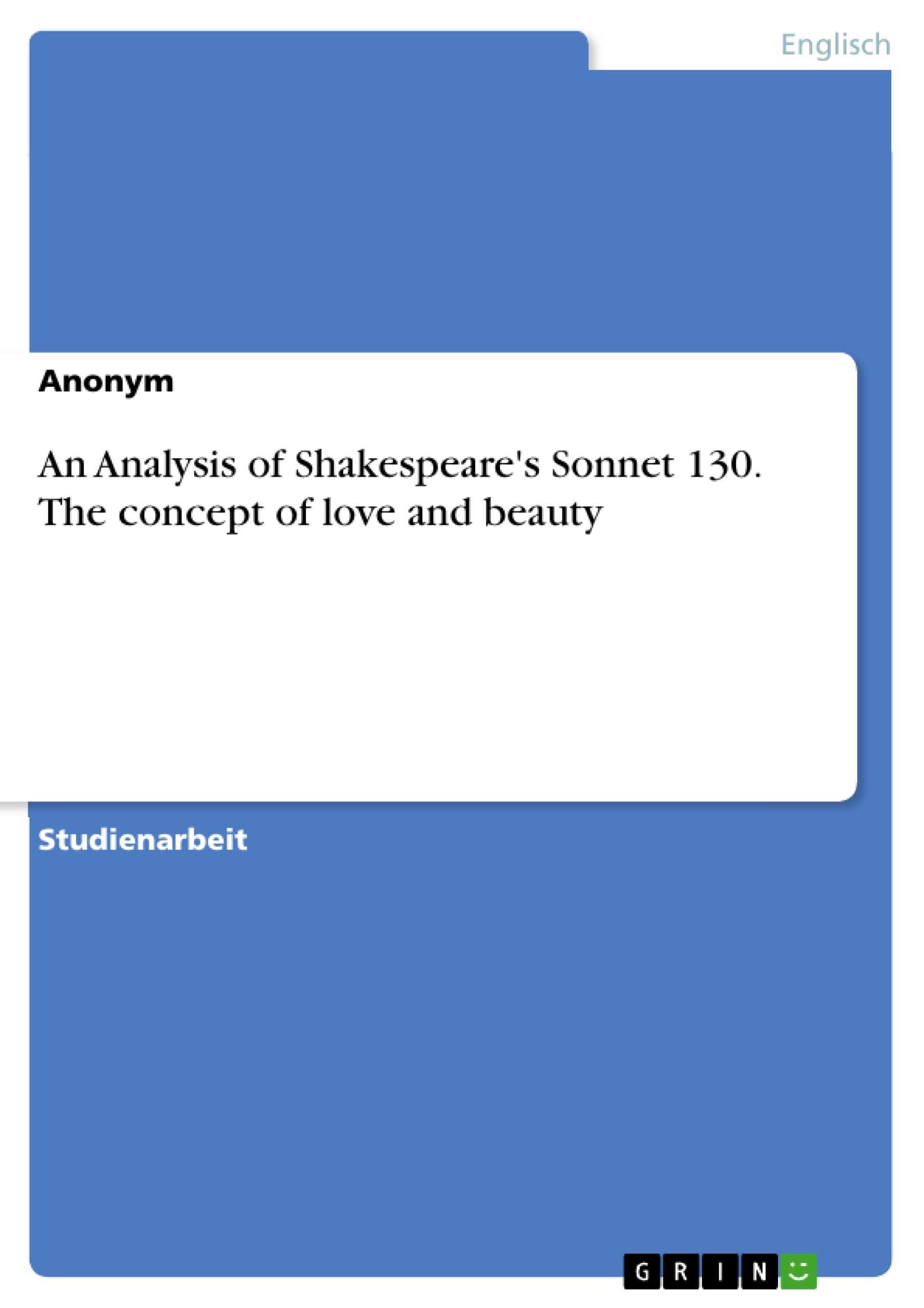Love Sonnets have a long tradition in English literature. The Italian poet Petrach, who is considered the father of the sonnet form, was the first one to invent a concept of love in sonnets that should influence many writers throughout English literature. In his sonnets, Petrarch praises his beautiful, godlike mistress Laura, who is utterly perfect on the inside and on the outside. Some of the greatest English poets, like Spenser and Shakespeare wrote sonnets after Petrach’s model. However, Shakespeare uses the Petrarchan conventions in a radically different way. Not only are a great number of his sonnets presumably about a relationship about two man, but also does he write about a ‘Dark Lady’ (Pfister 2012). “My mistress’ eyes are nothing like the sun” is the first line of Shakespeare sonnet 130, with which this term paper will be concerned. Sonnet 130 was written by William Shakespeare in 1609. From his collection of 154 sonnets, Sonnet 130 is one of his most famous. The term paper will examine, in what ways and in how far Shakespeare was influenced by Petrach and how he changes the Petrachan concept of love in sonnet 130.
In order to do so, firstly, the form of the poem will be analysed. Subsequently, the content and the theme of the poem will be examined further. Here, special attention is turned on the concept of love and beauty regarding the context of the history of the love sonnet and a short comparison will be drawn between Spenser’s Sonnet 15 and Shakespeare’s Sonnet 130. The conclusion will bring form and content together and verify the working hypothesis of this term paper.
Inhaltsverzeichnis
- Introduction
- Analysis of Sonnet 130
- Analysis of the form
- Analysis of the Content
- Conclusion
Zielsetzung und Themenschwerpunkte
Diese Arbeit analysiert Shakespeares Sonett 130 und untersucht, inwiefern er die traditionellen Konventionen des Petrarkischen Sonetts in Bezug auf Liebe und Schönheit aufbricht.
- Analyse der Form des Sonetts, einschließlich Reimschema, Metrum und rhetorischer Mittel
- Untersuchung des Inhalts des Sonetts im Kontext der Liebeslyrik
- Vergleich mit anderen Liebesgedichten, insbesondere mit Spensers Sonett 15
- Analyse der Darstellung von Liebe und Schönheit im Sonett 130
- Beurteilung der Rolle des Sprechers und seiner Beziehung zur Adressatin
Zusammenfassung der Kapitel
Introduction
Die Einleitung gibt einen kurzen Überblick über die Tradition der Liebesgedichte in der englischen Literatur, insbesondere die Entwicklung des Sonetts durch Petrarch und seine Einfluss auf spätere Dichter wie Spenser und Shakespeare.
Analysis of Sonnet 130
Dieses Kapitel analysiert Sonett 130 in Bezug auf seine Form und seinen Inhalt. Es untersucht die lyrische Stimme, die kommunikative Situation und die rhetorischen Mittel, die Shakespeare verwendet, um die Darstellung von Liebe und Schönheit zu gestalten.
Conclusion
Die Schlussfolgerung fasst die Ergebnisse der Analyse zusammen und zieht Schlussfolgerungen über Shakespeares Umgang mit den Konventionen des Petrarkischen Sonetts.
Schlüsselwörter
Shakespeare, Sonett 130, Liebeslyrik, Petrarch, Form, Inhalt, Rhetorik, Schönheit, Vergleich, Lyrische Stimme, Kommunikationsmodell, Tradition, Innovation, Englische Literatur.
- Quote paper
- Anonym (Author), 2017, An Analysis of Shakespeare's Sonnet 130. The concept of love and beauty, Munich, GRIN Verlag, https://www.grin.com/document/372431




